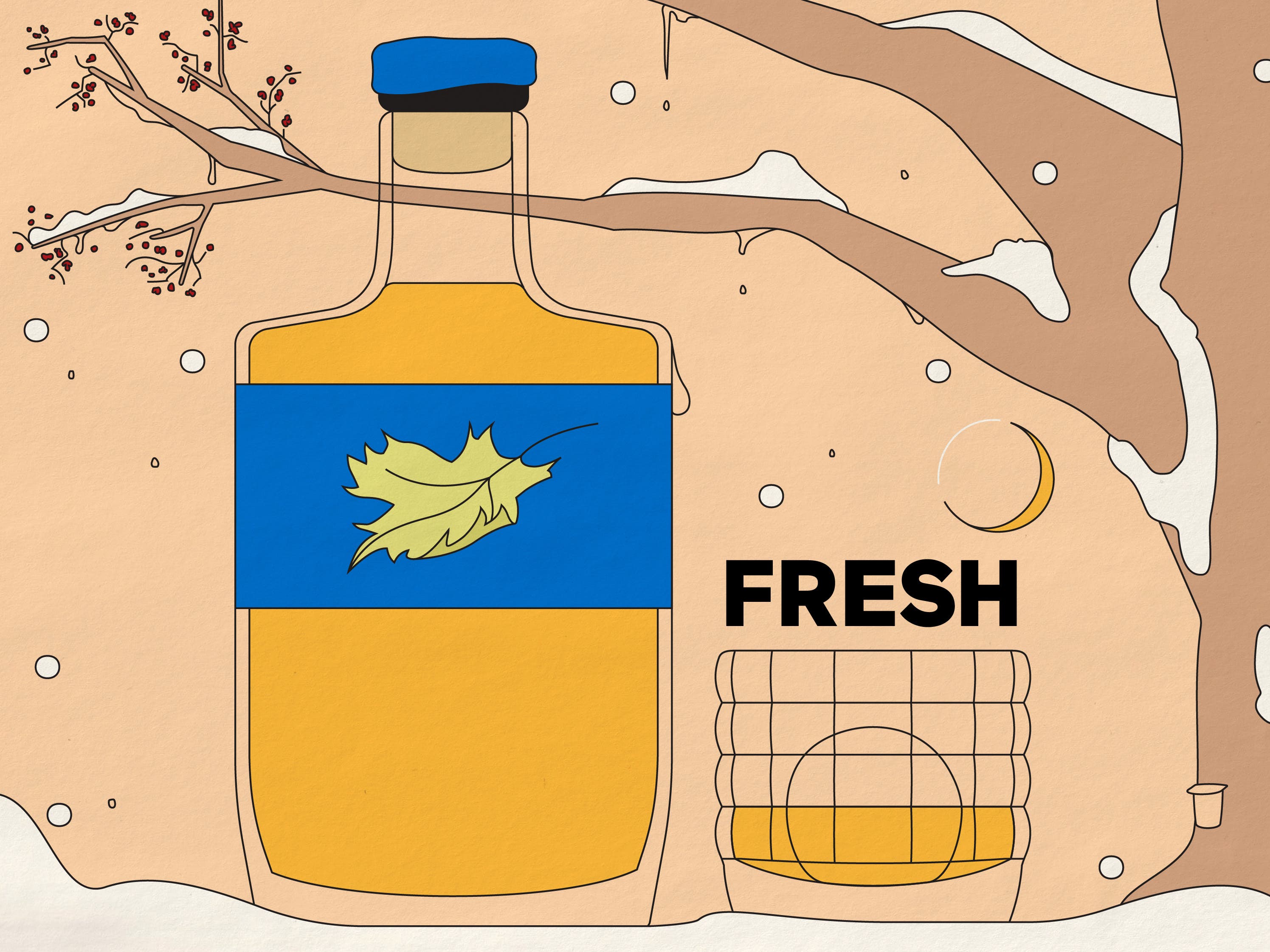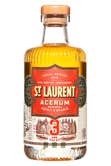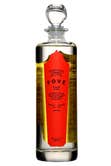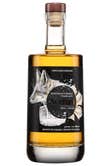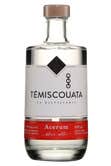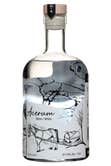If Scots have Scotch, the French Cognac and Mexicans Mezcal, Quebecers now have their own iconic spirit: Acerum, the spirit of Quebec!
Ace-what? A-C-E-R-U-M, like a contraction of the Latin word acer (meaning maple) and rum, which is made using similar fermentation and distillation methods, but with cane sugar rather than maple sap. To put it more simply, Acerum can be described as maple rum, although its taste is closer to whisky or fruit eau-de-vie, whether barrel-aged or not.
“We’re in new territory in terms of taste,” explained Joël Pelletier, co-founder of Distillerie St. Laurent and founding member of the Union des distillateurs de spiritueux d’érable (UDSÉ, we’ll talk more about it later). “There’s a definite hint of butterscotch and buttered rum, with fruit esters like apple and pear. There’s also a tannic quality, like tree bark, from the sap,” he added.
Corinne Cluis, founder of Fove Distillery, agrees: “You can’t look at it like a traditional maple product. It’s the same raw material, but it doesn’t taste like maple. People have a bit of cognitive dissonance when they try it,” she explained.
“We’re really like explorers. There’s still a whole world to discover. And that’s extremely exciting!”
— Joël Pelletier, co-founder of Distillerie St. Laurent and founding member of the Union des distillateurs de spiritueux d’érable


The ABCs of Acerum
The official definition of Acerum, as described by the Union des distillateurs de spiritueux d’érable, is “a maple eau-de-vie made exclusively by distilling alcohol from fermented Quebec maple sap concentrate.”
How is Acerum made? The UDSÉ identified four main steps in its book of specifications:
- Fermentation: The maple sap or syrup, which must come from Quebec, is transformed into alcohol by the addition of yeast.
- Distillation: The maple wine obtained from the previous step is then slowly distilled in a still to extract a delicate eau-de-vie.
- Aging: The Acerum can be aged in new or used oak casks (the Distillerie St. Laurent uses aged maple syrup barrels!) to lend texture and complexity.
- Finishing touch: Water is added to dilute it to achieve the desired alcohol content, between 35% and 45%. No additive—no alcohol, colouring, sweetener or aromatic—may be added after distillation to change the product’s taste or colour.
The union recognizes three types of Acerum:
- White Acerum, which is bottled without having undergone an aging or maceration process
- Amber Acerum, if it’s undergone a process of maceration or has been aged less than a year in a wooden cask
- X-year-old Acerum, if it’s been aged at least a year—the age corresponding to that of the youngest barrel used in its preparation
Source: The Union des distillateurs de spiritueux d’érable’s book of specifications
A history of maple-based alcohol
While evidence of illegal stills in sugar shacks from the 19th and early 20th century have been found, during the rise of the temperance and prohibition movement, the official history of transforming maple sap into alcohol is very recent. The Domaine Acer, in Témiscouata, was a pioneer. When Vallier Robert took the reins of the family maple business in 1990, he quickly saw the potential to make alcohol. In 1996, the maple farmer was granted the first licence to produce artisanal maple-based alcoholic beverages. He then began creating dry, sparkling and dessert wines from maple sap, which are also called acers.
The world had to wait another two decades before the first Acerum was produced—Distillerie Shefford marketed the first maple eau-de-vie under this name in 2017. At the same time, Joël and his associates at Distillerie St. Laurent in Rimouski were also experimenting with fermenting maple sap. Great minds truly do think alike—they both came up with the same name simultaneously!
The two distilleries decided to join forces and, with the assistance of Vallier from Domaine Acer, set up the Union des distillateurs de spiritueux d’érable, a non-profit whose mission is to promote Acerum in Canada and abroad, as well as establish production guidelines. The Union’s short-term goal is to define and implement the Acerum appellation to protect its use. It would be the first Protected Geographical Indication (PGI) for a spirit in Quebec.
“What we want is for consumers to know that when they see a bottle of Acerum, they can be sure it’s made of 100% Quebec maple syrup or sap without any additives or sweeteners,” explained Joël Pelletier.
The union has about a dozen producer-members at the moment, but soon several new distilleries will swell its ranks, according to Corinne. A trained biologist, she decided to try her hand at making Acerum after sampling the one from Distillerie St. Laurent. “There’s an opportunity to do something that’s unique to our land and to leave our mark.”


“There’s an opportunity to do something that’s unique to our land and to leave our mark. [...] I dream of the day there’ll be an Acerum section at the SAQ!”
— Corinne Cluis, founder of Fove Distillery
A growing interest
Although the Quebec public isn’t familiar with Acerum yet, excitement is starting to take root. “We’re pioneers. We can’t put the cart before the horse and create a new tradition overnight,” Corinne acknowledged. “But the stars are aligned, and we just have to spread the good news so people try it. I dream of the day there’ll be an Acerum section at the SAQ!”
Joël has, however, noticed a keen interest in other countries. “Acerum is the product that most excites international clients,” he said. Distillerie St. Laurent already exports to 12 countries, including France, Japan, Switzerland and Belgium. It’s his opinion that the product’s singularity creates the demand.
“It can take generations before people adopt new products. You can see this as a legacy for the future,” continued Joël. “I find it cool that a bunch of local producers came together to lay the groundwork for something that will be a part of Quebec culture. We’re really like explorers. There’s still a whole world to discover. And that’s extremely exciting!”
Tasting tips
To fully appreciate the aromas, enjoy Acerum at room temperature or slightly chilled. Since it isn’t sweet, it goes well with dessert.
Acerum works equally well in a cocktail, especially with apple or in a sour. “Citrus really brings out the maple aroma,” suggested Corinne.
Amber Acerum, which is slightly woodsy with notes of caramel, can also replace rum or whisky in classic cocktails like an Old-Fashioned.
Discover Acerum


Artwork by Gabriel Sabourin
A Montrealer and graduate in graphic design, Gabriel finds inspiration in the purity of technical drawing and leverages his offbeat sense of humour to create captivating worlds. His two greatest passions are illustration and animation.
 Free in-store delivery with purchases of $75+ in an estimated 3 to 5 business days.
Free in-store delivery with purchases of $75+ in an estimated 3 to 5 business days.
